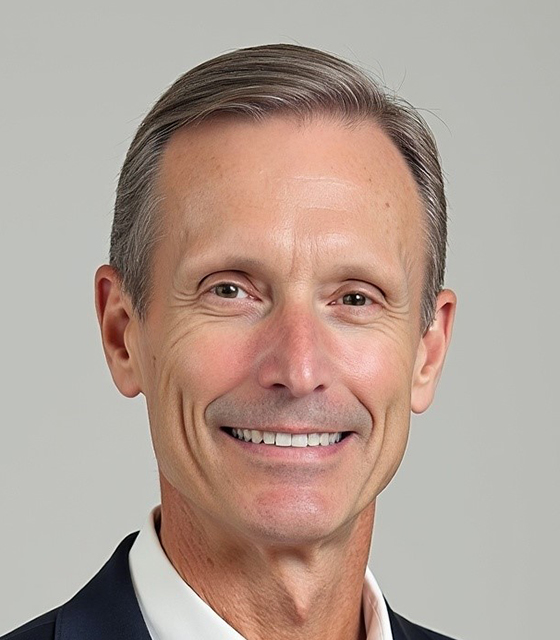BNY Mellon held the first in a series of regional thought leadership discussions in Frankfurt. It brought together a number of German banks to discuss the future of transaction banking, and how the German market may be ahead of the game in terms of how it offers its working capital banking solutions.
Participants:
Moderator: Alexander Malaket, president, OPUS Advisory Services International
Hosts: Dominic Broom, managing director, BNY Mellon
Daniela Eder, vice-president, BNY Mellon
Panellists: Axel Miller, principal, Oliver Wyman & Michael Molliné, senior vice-presidents, LBBW
Markus Wohlgeschaffen, head of global trade finance & services, UniCredit Group
Ingrid Weißkopf, senior product manager, Commerzbank
Malaket: Why is there increased interest in transaction banking?
Molliné: Transaction banking seems to be back in fashion. Why? Easy. It’s risk-averse. Maybe five, maybe 10 years ago, nobody looked for transaction banking, because, compared to return on equity (ROE) of 25%, 30%, 40%…in transaction banking, if you are very good, you have 10% ROE. But normally it was more between 5% and 10%.
Eder: I think it’s a very risk-oriented environment right now and looking at the traditional products, the constant revenue earners, every month, that’s important all of a sudden.
Malaket: Referring to the BNY Mellon white paper and its proposed model for more collaborative banking methods, how can we work together to better manage our risks?
Broom: The end of the era of cheap liquidity has brought the need for a true understanding of the counterparty that you’re dealing with sharply into focus.
I think the way forward is built around collaboration; matching up certain key knowledge and expertise in the global transaction chain, and marrying them together to create best practice and best service for the customer.
Wohlgeschaffen: This is also what I have found very interesting in the white paper – there is a combination of banks that have the investment power for systems but there will also be the need for collaboration for the smaller banks, and customers want to continue to deal with their local banks for many good reasons.
Now we really have to put through this concept of true globalisation. Why?
Because technology is not cheap, but it’s not as expensive as people might think; it’s the implementation endeavour that counts.
Banks have to educate and to explain to the customers that the world is complex, but, it shouldn’t hinder customers to go globally for sourcing and selling their products.
The very famous Steinbeis Institute has clearly demonstrated that the corporates that go global are much safer in turbulent times than corporates that only focus on the local market or a very narrow radius. I think this is what our future function has to be.
Malaket: What’s the view around the table about whether a bank should lead clients to an integrated transaction banking, treasury capability, or whether they should in fact follow their clients?
Miller: Client demand should rule; if there is a client demand, you have to be there, and ideally, a little bit ahead of the client anticipating future demand. I think the crisis has resulted in corporate treasury having a far broader mandate in general within some institutions, and that requires the bank to provide them with a complete platform and a whole suite of products which cover the remits of that changed mandate.
Eder: Know your client – what are his needs now, what will be his needs tomorrow, what will be his needs in the future? If we’re going back to a regional, “closer to a client” model, then you have to take a look at what his needs really are.
Wohlgeschaffen: We currently distinguish between domestic and cross-border payments and guarantees, but if you consider the EU now after the fall of the Iron Curtain, what, in Europe, is real foreign trade? It can be foreign trade if you sell, as a Bavarian company, to a company in Hamburg – that can be more foreign trade than selling to Hong Kong, for instance.
So, this system, this distinction between domestic and international, doesn’t make any sense. The customer doesn’t care whether it’s a domestic payment or a so-called cross-border payment. We have to change the parameters.
Broom: A corporate treasurer wouldn’t care if one of our teams were to go in and sell a domestic payment, versus a foreign payment.
To that individual, it’s a payment. The banker’s job is to understand the business need that drives this; namely: do I know that customer well enough to understand what their real requirements and underlying needs are? For many in our industry, that is a huge mindshift to get people thinking that way. The problem here is, who takes the lead?
Miller: Bringing sales and advisory of multiple products within traditional transaction banking together is still a huge challenge. Now bridging that into traditional long-term financing, ie corporate banking with all that is there, is an even further challenge. We fully subscribe that a product-neutral coverage across corporate banking and transaction banking is the future – we always call it corporate transaction banking.
Wohlgeschaffen: If we are truly honest, bankers were used to a bank-centric world, and this is over. The customer is in the centre. And this also means that irrespectively whether the relationship manager is a cost centre or a profit centre, the bank should understand that all is about the relationship manager, he or she detects the needs of a customer, and the relationship manager has to be served and seconded by product specialists.
Weißkopf: I want to refer to this collaboration between the banks, to note that this would be a means to save a lot of costs. Banks should cooperate to handle these transaction costs: there is a lot of room to move there, which then also allows greater focus on the client.
Wohlgeschaffen: Who should be in the lead? I think banks should do it, because the underlying problems are so complex, that only we can explain it to the customers.
I do recall we had a meeting with a very large customer, with client staff from different departments, including finance and procurement, and some met for the first time in their professional life – they were not aware that they have to collaborate – and who brought them together? That’s why I think it is so crucial that the customer has one entry point, and this is the relationship manager.
Miller: Indeed the key is to have the product-neutral and business-neutral relationship manager equipped with the capabilities, and an incentive scheme that incentivises to really focus on the client needs instead of focusing on product revenues only.
Broom: I think it’s becoming common, within corporations, for the treasurer to have control over procurement functions. We’re beginning to see a distinction between types of treasury operations.
One is what I would call the treasury profit centre, where they are assessed and managed on the overall profitability of their business, ie the end-to-end working capital cycle; and those treasury centres that remain a little bit in the past, where they are seen purely as a cost centre and where their performance drivers are wholly linked to the receivables side of the cycle.
To this point, our recent corporate survey certainly showed the German marketplace being ahead of the pack in terms of its thinking and its application of holistic working capital services.
Is that fact or fiction? What could be done to build on that experience and expertise to drive things forward, given that Germany has always been a market to which the rest of the world looks to for leadership?
Molliné: In terms of the Mittelstand, as they like to work with the local bank because they are local and in our case, just to mention that we are a state-owned bank, we are not there just to go in because there is a good margin, we are there to provide our local customers with banking products, which includes credit, so it’s a different culture.
Wohlgeschaffen: I had many discussions with acquaintances who have clearly told me that the best risk management tool is ethics. Certain things you just don’t do – if you betray someone, everybody knows it. So, why all the hassle to implement complex supply chain finance programmes that go deep into the ERP systems of the customers, and that really take a lot of time?
Broom: Markus has put his finger on the pulse as usual and come up with a phrase that I’m going use again and again, namely ‘local banking ethics’.
If you buy into the collaborative model, then surely it is because you’re getting the best of both worlds, namely that local dynamic, that local reliance, understanding, commitment, tied in to the bigger world and the broader range of working capital capabilities.
Wohlgeschaffen: Smart entrepreneurs have always understood that, especially the smaller German Mittelstand, they were always smart enough and they were, and are, the backbone of the German industry.
Coming back to the study of the Steinbeis Institute, it clearly said, if you go abroad, if you go global, you are more robust.
A local bank, a local savings bank, will never doubt that an international bank can provide better services for global activities, so banks have to get used to more consultancy, they have to explain things rather than sell products.
Eder: My experience with the savings bankers in that space is that as they have to play a regional role, and are dedicated to their region and also dedicated to their employees that they have and if you venture into a volksbank or a savings bank with an outsourcing concept…
Malaket: There is a critical distinction here, that it is a collaborative model, and outsourcing typically wasn’t positioned that way. As an industry, we’ve done a very poor job in marketing the value of our advisory expertise. If we turn around and make the same mistake about the kind of collaborative dynamic we are discussing, and start to call it ‘outsourcing’, we will start to represent it as something that is at least 10 or 15 years old already, and has just been repackaged.
Broom: You’re absolutely right, the world has moved on from the narrow definition of outsourcing, which we view as being rooted in an environment where you are out-selling products, to one of collaborative thinking across the working capital cycle, where you are approaching a potential solutions partner as much to say, right, what can you bring to me, as what can I bring to you.
I think it’s with that in mind that we’re addressing this from a collaborative model as opposed to an outsourcing model; as rightly or wrongly, the latter implies cost considerations first, rather than customer and solution first.
Miller: What we are looking at is focusing on the core strengths and capabilities of individual banks. If that happens it will likely end up in a multi-layered structure, where you have the local banks with the client relationships, local expertise and risk management capabilities to detect real demand, and you will have the global infrastructure and processing providers, which bring global reach and high volume, multi-product processing capabilities.
You might even go one step further, and say, the bank will act as a pure advisor leveraging its client knowledge and relationships and channel in the provision of product, infrastructure, and processing capabilities or third-party capital.
The views expressed herein are those of the authors and contributors only and may not reflect the views of the represented organisations. This does not constitute business or legal advice, and it should not be relied upon as such.








